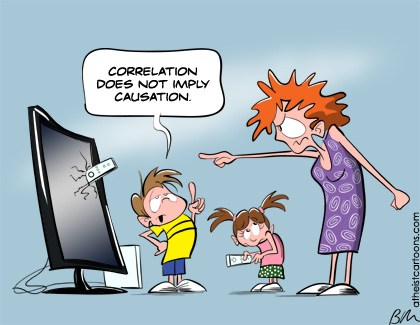

So, then, how do you avoid the false cause fallacy in your own work? We have a few tips that you might want to follow: And we cannot draw any useful conclusions from this kind of relationship between variables. Without this, we’re left with a spurious correlation (i.e., two things that coincidentally overlap in some way). And we’d need evidence that the two things were connected. If we truly wanted to say that one of these variables caused the other one, we would need to explain how Nicolas Cage movies are related to pool deaths. But this would be at best a hasty conclusion.Īs with the windmill example above, correlation alone is not proof of causation. If correlation implied causation, we might assume that Nicolas Cage movies are deadly around water. Is Nicholas Cage a secret pool murderer? Our libel lawyers say ‘No’. For example, there is a genuine statistical correlation between movies released featuring Nicolas Cage and the number of people who drown in US swimming pools each year. The false cause fallacy can also occur when there is no real relationship between variables despite a correlation. This involves assuming that the order of events implies causation. And if we get this relationship wrong, we can end up with reverse causation.Ī similar error is the post hoc ergo propter hoc fallacy (i.e., after this, therefore because of this). Thus, a correlation can only tell us about a cause if we know how the variables are related. Thank you for subscribing to our newsletter! It’s basically a big rotary fan, right?įor anyone who knows anything about windmills, this is obviously a false cause: windmills catch wind to create rotational energy, not the other way around. All we know is that the two things happen together, increasing and decreasing at the same rate. And this can lead to mixing up a cause and an effect.įor instance, based on a correlation alone, it would be just as reasonable to believe that windmills cause wind as it would be to believe wind causes windmill blades to turn. When looking at a correlation, we may misunderstand the relationship between the variables. Two major hazards here are reverse causation and spurious correlation. And if we are too quick to conclude a causal relationship, we might end up with a false cause. However, following from or coinciding with something is not the same as causing it. The false cause fallacy occurs when we wrongly assume that one thing causes something else because we’ve noticed a relationship between them.įor instance, if one thing happens after something else, we may assume that the first causes the second. And if we misinterpret a correlative relationship, we might fall into the false cause fallacy. Correlation does not always imply causation. For instance, few would deny that skipping meals can cause hunger, or that a faster vehicle can reduce journey time.īut we must be careful when drawing this kind of conclusion.

In some cases – including the examples we’ve used here so far – you can even identify a causal relationship between the variables.

For example, the variables “speed of vehicle” and “duration of journey” are negatively correlated because a faster vehicle will typically complete a journey in less time.Ĭorrelations like this can be useful because they can help us spot a connection between two things. A negative correlation occurs when one variable increases as another one decreases.For instance, there is a clear correlation between the variables “foot size” and “shoe size” because people with bigger feet reliably have bigger shoes. A positive correlation occurs when two or more variables seem to increase or decrease together.Typically, this is a statistical relationship where two variables are interdependent: Correlation and CausationĪ correlation is a mutual relationship between two or more things. A good deduction!īut does the same logic always apply? Are two things that seem to occur together always related? Or is this sometimes an error? In this post, we look at correlation and causation to help you understand – and hopefully avoid – the false cause fallacy in your academic writing. And if we notice that we regularly feel hungry after skipping meals, we might conclude that not eating causes hunger.

If we don’t eat all day, for example, we will get hungry. When we see that two things happen together, we may assume one causes the other. The False Cause Fallacy: Correlation Does Not Equal Causation


 0 kommentar(er)
0 kommentar(er)
